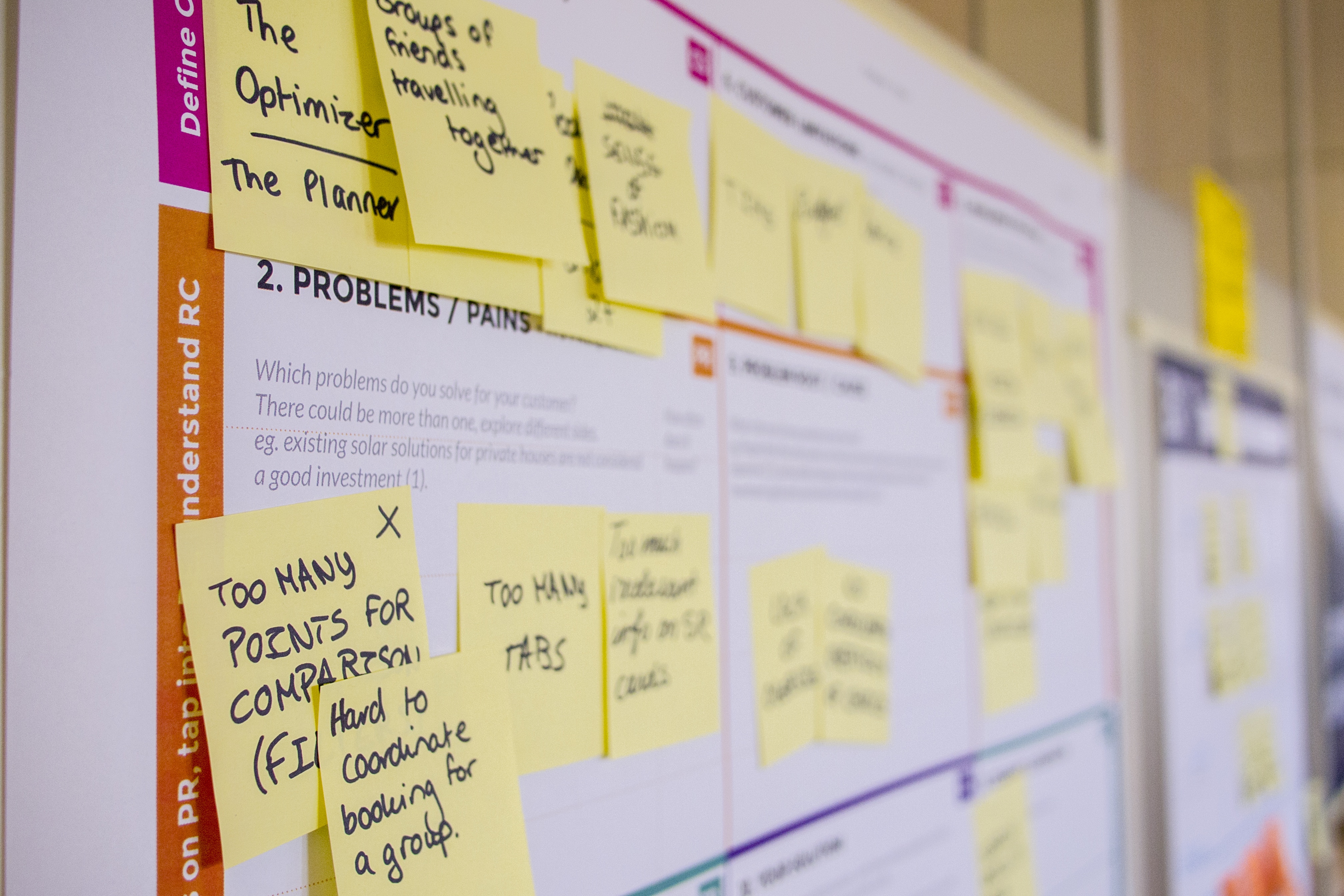Do you know that almost 71% (three-quarters) of organizations now use agile approaches often, sometimes or always! – Project Management Institute
The inevitable rise and fall of our dot.com-driven huge internet economy often distract us from the fact that today’s business environment is continuously changing at the most dramatically increasing pace.
To fully thrive in today’s turbulent environment, all of us need to confront the business requirements for persistent innovation while forging the workforce culture of the future. One way to take a step towards is to adopt Agile Software Development.
It ’s various approaches like Crystal methods, Extreme Programming, Scrum, Lean Development, Adaptive Software Development, and others, perceive the change from a standpoint that mirrors today’s turbulent business as well as the technological environment.
However, if the shift is in the direction of business agility in its entirety or toward Agile project budgets then the unarguably agile approach is permeating businesses, all over the world, including small and big, locally and internationally.
Agile is nothing but a software development philosophy. This philosophy majorly focuses on:
- Working software more than comprehensive documentation
- Interactions and individuals over tools and processes
- Customer collaboration in excess of contract negotiation
- Responding to change rather than following a plan
Agile Software Development – An Umbrella Term
Agile Development is considered as an umbrella term for many incremental and iterative software development methodologies. As stated above, the most popular and well-recognized methodologies include Scrum, Crystal, Extreme Programming (XP), Dynamic Systems Development Method (DSDM), Future-Driven Development (FDD) and Lean Development.

Each of these agile methodologies is quite unique in its particular approach. All of them share a very common vision and basic core values. Fundamentally all of them incorporate iteration along with continuous feedback which it offers to successively deliver and refine a software system. All the agile methodologies require continuous testing, planning, integration and various other kinds of the continuous evolution of both the business project and the software.
In comparison to traditional waterfall-style procedures, all of these methodologies are actually lightweight, and inherently adaptable. What makes agile software development a popular choice among organizations is that agile methods emphasize empowering people to ensure collaboration and help them make valuable decisions together, effectively, and quickly?
Agile Goes Global
Agile is not just about being more responsive and faster, it’s also about continuous delivery!
Agile Software Development has the capability to benefit every other company. On a global scale, the spread of agile is virtually homogenous.
One reason for this is that any project that is based on such techniques usually involves strong development teams, from around the world and from different places, encouraging the use in various cultures.
Typically, the agile team members take part in different projects within organizations and share their experiences to influence people to adopt the methodology just as a new project is successfully completed or any application is developed. This results in a noticeable increase in the number of agile products in such companies.
Another reason why Agile is now so popular on a worldwide scale is the increase in the outsourcing of development projects. More and more, every size of companies is now adopting Agile. As a result, developers in such companies get benefited from an increasing number of winning projects.

To give you an example, Microsoft is now a 41-year-old organization parts of which has implemented Lean and Agile. In 2007, Microsoft faced an increasing number of complaints from its employees during the time Windows Vista was offered publicly. In 2007, Windows was released by Microsoft in 3-year cycles with very little possibility of users’ feedback.
But now, the situation has remarkably shifted. Since 2014, there has been a complete transformation of Microsoft Windows. Now, it is successfully getting feedback from a very active user group that comprises 7 million+ users and introducing weekly updates - a game-changing and transforming acceleration.
Apart from the customers, when employees see their suggestions and ideas implemented in just a matter of days than years, it offers a huge benefit and improves staff morale. Following this, other segments of Microsoft like Developer Division are also implementing Agile.
Why Agile Software Development
Agile methods originated from software professionals’ real-life project experiences. These professionals experienced the limitations and challenges of conventional waterfall development on multiple projects. However, the methodology promoted by agile development worked in direct response to the concern associated with conventional software development in terms of specific processes and overall philosophy.
In its simplest form, the agile development offers a very lightweight framework to help teams, in a constantly functional, evolving, and technical landscape while maintaining focus on the fast delivery of business value. Due to this focus, Organizations get the benefit of reducing the huge risk, related to software development.
In general term, agile development considerably accelerates the delivery of business value. Agile development, by means of continuous feedback and planning process, ensure maximized value all across the development process. Due to this iterative planning as well as a feedback loop, development teams can continuously and easily align the delivered software with required business results.

The development team easily adapts to changing needs throughout the process. Also by evaluating and measuring status that is based on the indisputable truth of testing software and working, accurate visibility into the progress of many projects is now available. Finally, due to following an effective agile process, the conclusion of a project is actually a software system that better addresses the customer and business needs.
Agile – A Management Secret
In some ways, Agile can be recognized as the best-kept secret on the entire planet. The approach has been underway for more than 15 years now. Today, you can easily find hundreds of thousands of efficient agile practitioners, all over the globe. This also includes tens of thousands of companies implementing Agile. However, many general managers now know quite little about it.
The primary reason is that agile popularity and movement accelerated in software development back in 2001 created a clear path of management innovation. The long neglect of Agile has now changed as the methodology is now being embraced by every part of organizations.
The Four Common Themes of Agile
No matter the size of the company, many organizations that have implemented the agile approach observe a notable and striking convergence around the primary four themes. Let’s discuss them separately.
Delighting Customers
It is an obsession to continuously add more value for users and customers. Basically, companies now need to generate intimate, frictionless and instant value at scale, anytime, anywhere and on any device. Not to mention this is more than enough attention to users or customers. In fact, it is the complete shift of the organization’s goal and a revolution in management.
Descaling Work
A presumption that in today’s complex, volatile, ambiguous and uncertain world, big complex problems must be disaggregated into smaller batches and should be performed by cross-functional small autonomous teams. These teams work iteratively in small or short cycles in a flow along with fast feedback from end-users and customers.

Enterprise-wide Agility
Recognition that to get fully entrepreneurial; the entire organization must embrace the overall entrepreneurial mindset. This is important to make sure that the entire firm increasingly functions as a more interactive network. In brief, Agile is not only limited up to IT. It has spread its wings into non-IT industries and spreading throughout the enterprise, at all levels.
Nurturing Culture
A long and never-ending commitment to systematically strengthen and actively nurture entrepreneurial behavior and mindsets throughout the organization.
To embrace Agile, the pursuit of all four themes is the secret key. It is also important to sustain agile implementation. Individually not even single observed management practices are actually new. But what is different and new is the manner that agile management practices, goals, and values constitute a logical as well as an integrated approach towards continuous innovation, lubricated with and driven by a pervasive entrepreneurial mindset.
From the perspective of agile critics, the passion with which both the staff and managers pursue the agile methodology to management is often confused with zealotry. Also, it is confused with the mistaken belief that this approach is presented as the panacea. However agile, it doesn’t offer several implementation challenges.
It simply mobilizes the enthusiasm and energy of people and generates meaning in work as well as at work. The approach goes further than small-minded virtues of reliability and efficiency and draws on the virtues of human spirit i.e. creativity and generosity.
The Future of Agile Software Development
There are many fundamental shifts which drive economics, products’ structure that we create along with the nature of processes that we use to produce products. All these changes in technologies, products, markets, and firms are not just a passing phenomenon.
All these fundamental changes are actually driven by various powerful forces present deep in the main economic system. These forces have been at work for a long time and for many years. Thus we must stay prepared to go deep as the forces are rooted in everything and in every process that is used to create them.
Even in the field of information technology, we are emerging from the time in which processes have always been the king and now we are looking forward to adopting an approach or moving into a time where only mobility matters.
To be more precise, agile software development is not simply defined by a small set of techniques and practices. In fact, Agile development describes a more strategic capability, a potential to create as well as respond to change, a capability to balance structure and flexibility, a challenge to draw innovation and creativity out of the development team, and a chance to lead companies through uncertainty and turbulence.
Agile has reached its 20th birthday, support teams, software teams and even marketing teams are now practicing its principles and rules for years. There are many companies that are now producing some really amazing products using the practices of agile software development.
As organizations are now gaining experience with every passing moment, teams may go for different practices while inventing new ones that are customized to their overall environment. And considering all the new experiments being conducted in Agile, the buzzwords now include kanban, DevOps, lean startups and continuous delivery.
While the IT industry is opening its eyes to the old industrial practices, the non-IT industries, at the same time, like finance and healthcare have also started embracing different agile concepts much faster than others. The best example can be taken from people who created innovative care models in different hospitals comprising of self-organizing teams.
Despite these new and agile ideas, we still need to fill in various gaps. We don’t have enough tools to ensure continuous integration as well as test-driven development for different applications built on various technologies like Siebel, SAP, and mainframes. The developers, at the time of the waterfall era, never believed that agile practices would be implemented and become so popular. Thus by the same token, this can be deduced that the new wave of agile methodologies will continue to emerge.
Within the software community, the agile methods have gathered a bit of controversy. Yet from their emergence, these approaches have continuously delivered much higher quality software systems in very less time than other traditional processes. If you also run a business, take the assistance of software development professionals to get familiar with the practice or theory of agile development.





